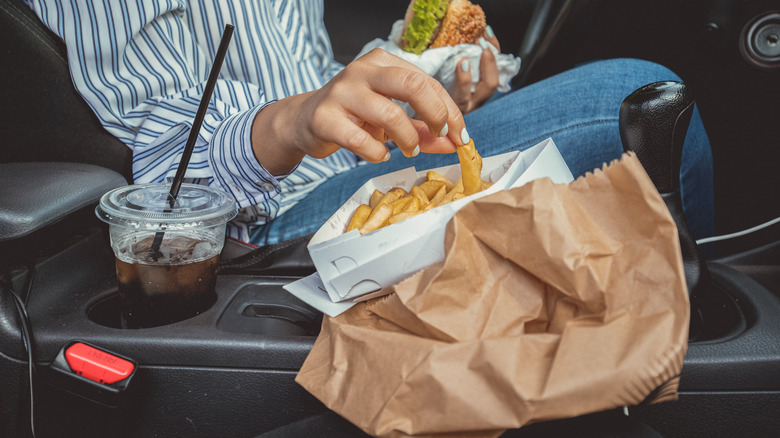What Is Actually Considered Fast Food?
Did you know that fast food existed as early as the Ancient Roman Empire? Called thermopolia, these takeout establishments kept families of the time fed in their day-to-day lives, providing a hot, quick bite — much like modern fast food restaurants do today. In the 21st century, however, quick service meals have evolved quite a bit, to the point where it's difficult, but not impossible, to tell which chains can still be classified as fast food. To help make the distinction, Food Republic spoke to Alfred Goldberg, chief brand strategist at Absolute Marketing Solutions. The expert told us that while the term "fast food" isn't regulated, "The key characteristics of fast food are speed, with meals ready in just a few minutes."
"Fast food has the lowest price point and lowest food quality with items being mass-produced and sometimes frozen or pre-cooked," Goldberg continued. It's also important to pay attention to where exactly you are placing your order. "Ordering is done through counter service, kiosks, or a drive-thru" at a fast food joint, according to the expert. The drive-thru might be one of the biggest indicators that the establishment you're patronizing does, indeed, serve up fast food, especially if it's open well into the night. You just can't get your fix of Chipotle, the Father of Fast Casual, after the bars close — but Taco Bell's late-night drive-thru almost never lets you down, with its fairly low pricing and consistent tastiness.
Fast food joints have borrowed some concepts from fast casual eateries — but may be shedding them
Fast casual dining has posed a serious threat to fast food for the last 15 or so years, and fast food chains, seeing their customers flock elsewhere, have seemingly adopted an "if you can't beat 'em, join 'em" mindset. "The lines between fast food and other categories have blurred in recent years," admitted Alfred Goldberg. "Increasing costs, changing consumer expectations, new technology, and a demand for more customized dining experiences have led fast food restaurants to borrow from fast-casual's playbook," while still remaining true to their fast-food roots. Primarily, he told us, they have evolved toward making their dining areas more inviting, as well as upgrading their food quality (Wendy's remodeled some of its dining rooms in the 2010s to include flat-screen TVs, and in 2018, McDonald's switched from frozen beef to fresh, as two examples).
But while fast food chains have adopted fast casual traits, "They have maintained a focus on being ... the fastest," Goldberg said. "Investments in new technology and new approaches such as digital drive-thru lanes have allowed them to maintain a speed edge over fast casual rivals" — if not much of a price advantage, anymore. Interestingly, this emphasis on speed is causing the pendulum to swing back on dining areas. Where once fast food chains mimicked fast casual by encouraging guests to stay and eat in-restaurant, some are now starting to do away with dining rooms altogether.


